A garden that blooms year-round adds continuous color and life to your outdoor space, no matter the season. By choosing the right plants, you can ensure that your garden is always vibrant, whether it’s spring, summer, fall, or winter.
In this article, we highlight 16 essential plants that will keep your garden blooming throughout the year. From early spring bulbs and summer perennials to fall foliage and winter-flowering shrubs, these plants will provide consistent beauty and interest in every season. No more waiting for months to enjoy your garden—create a garden that’s full of life all year long!
Winter Jasmine
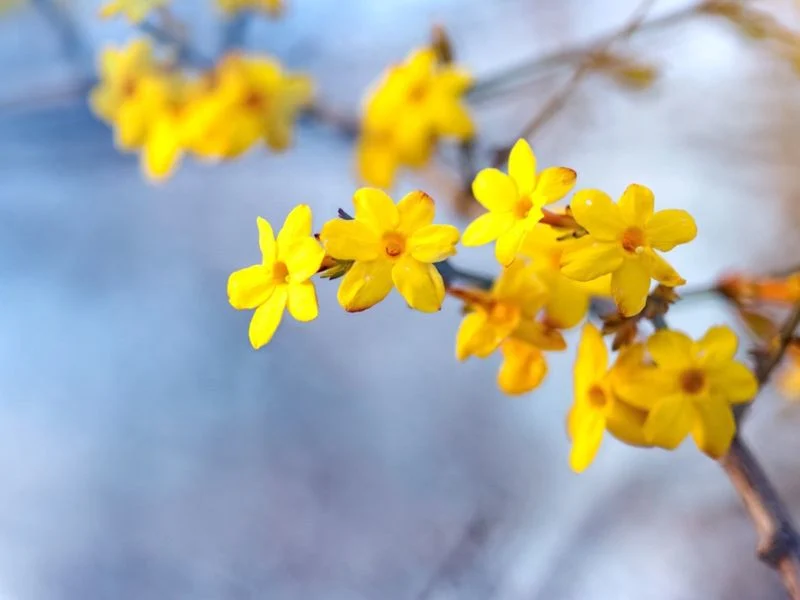
Winter Jasmine brings cheer to the colder months with its bright yellow flowers, persisting through frost and snow. Native to China, this shrub thrives in well-drained soil and partial to full sun. Its arching branches add a graceful touch to any winter landscape, creating a striking contrast against bare trees. Easy to care for, this plant requires minimal pruning, making it ideal for busy gardeners. Consider planting it near a wall or trellis for support. Winter Jasmine not only brightens the garden during the off-season but also attracts early pollinators.
Hellebore
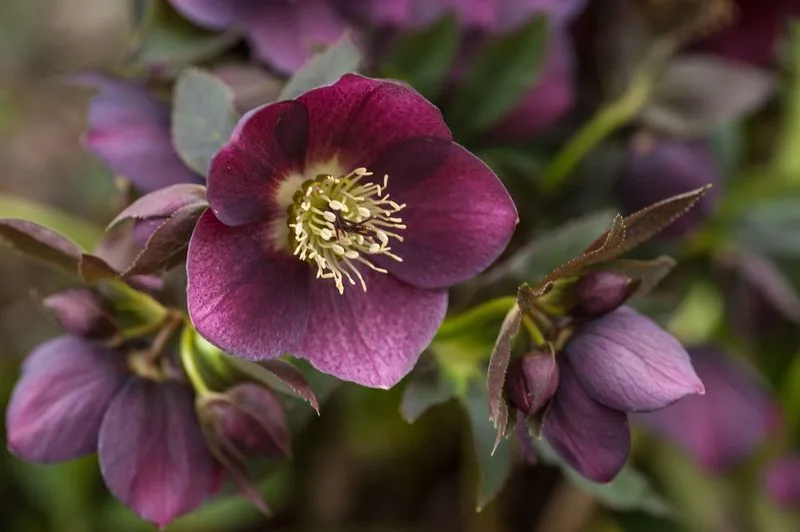
Known as the Christmas or Lenten Rose, Hellebores offer exquisite blooms from late winter to early spring. These hardy perennials are perfect for shaded areas, with their captivating flowers emerging even through snow. Available in a spectrum of colors, they add elegance to the garden when little else is in bloom. They prefer well-drained soil and a sheltered spot. Hellebores not only provide visual interest but also serve as a crucial food source for bees waking from winter dormancy.
Forsythia
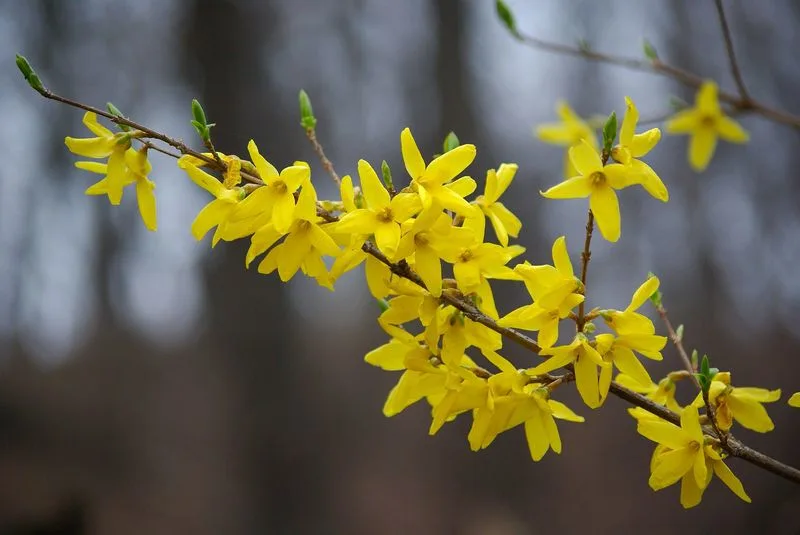
Forsythia is a classic harbinger of spring, with its brilliant yellow flowers appearing before the leaves. This fast-growing shrub thrives in full sun and well-drained soil. It can be used as a standalone statement or as part of a hedge. Prune immediately after flowering to maintain its shape. Forsythia’s golden display is a cheerful sight, making it a beloved addition to any garden. Its early blooms are among the first to nourish bees, contributing to a healthy ecosystem.
Tulips
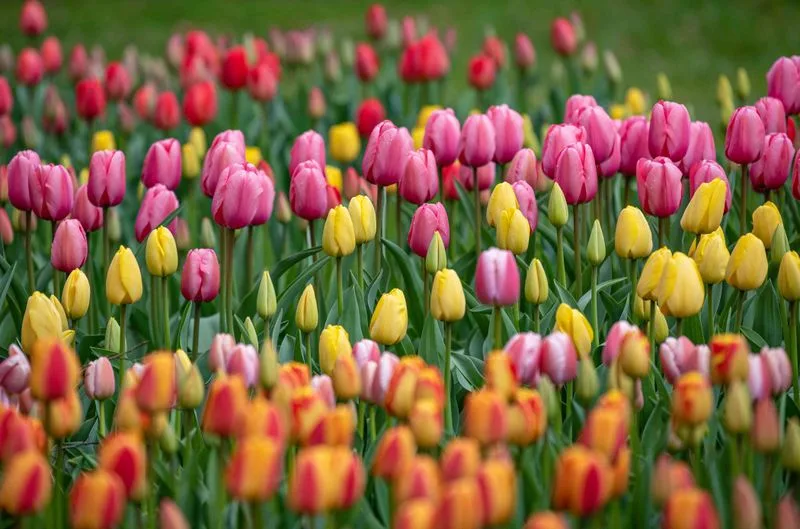
Tulips are synonymous with spring, offering a wide variety of colors and shapes. These bulbs are easy to plant and manage, making them a favorite for gardeners of all levels. Plant in well-drained soil and ensure they receive ample sunlight. Tulips can be arranged in beds or mixed with other spring flowers for a vibrant display. Consider staggering the planting times for continuous blooms. Tulips not only brighten the garden but also provide an excellent cut flower for indoor arrangements.
Peonies
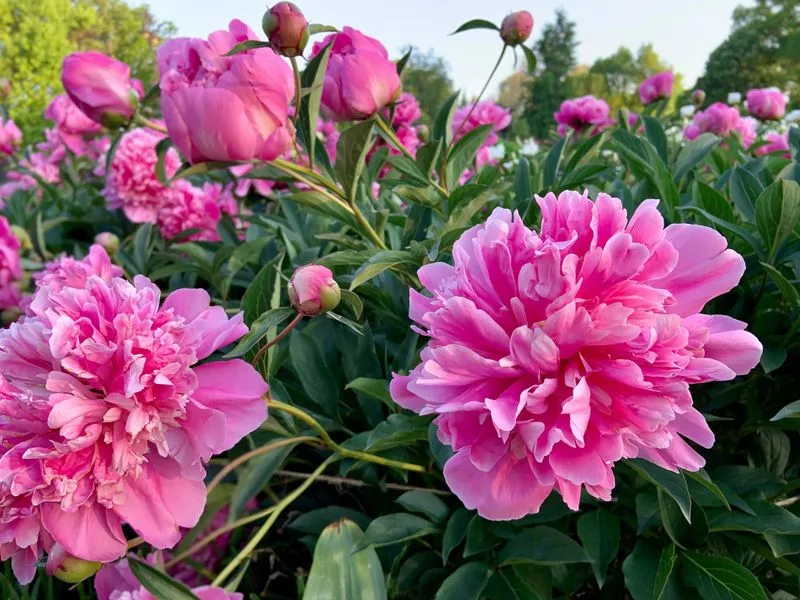
Peonies, with their lush, full flowers, are a summer favorite. They thrive in sunny locations and well-drained soil. Known for their longevity, peonies can bloom for decades with proper care. Their large, fragrant blossoms attract pollinators and add a luxurious feel to the garden. Support the stems to prevent drooping, especially after rain. Peonies make excellent cut flowers, bringing their beauty indoors. Their timeless elegance ensures they remain a staple in gardens around the world.
Lavender

Lavender is prized for its fragrant purple flowers and soothing aroma. It thrives in sunny, dry locations with well-drained soil. This versatile plant can be used in borders, containers, or as a hedge. Lavender attracts pollinators and repels pests, making it a functional addition to any garden. Prune after flowering to encourage new growth and maintain shape. Beyond its beauty, lavender offers culinary and medicinal uses, enhancing its value. Its calming presence is a must-have for any year-round garden.
Hydrangeas
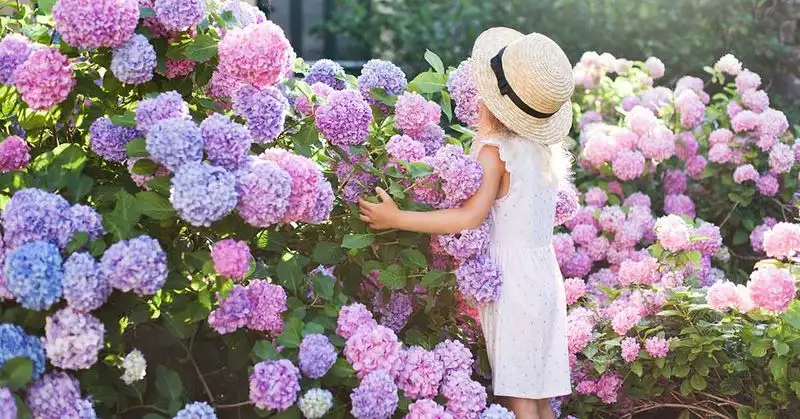
Hydrangeas are known for their large, colorful blooms that can change color based on soil pH. They thrive in both sun and shade, making them adaptable to various garden styles. These shrubs bloom from late spring through summer, providing continuous interest. Regular watering and mulching help maintain their health. Prune in late winter to encourage vigorous growth. Hydrangeas are a classic choice for creating stunning floral arrangements, offering versatility in both garden and home decor.
Daylilies
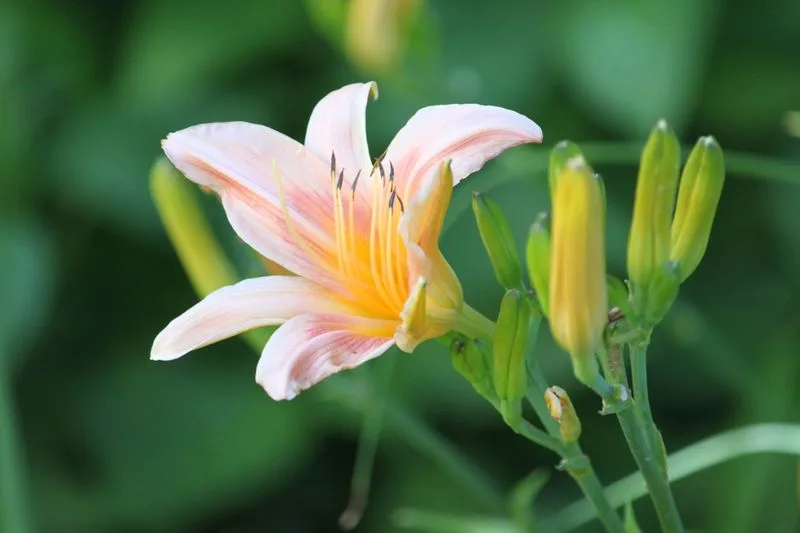
Daylilies are celebrated for their resilience and long blooming period. Available in a myriad of colors, they adapt to various soil conditions and climates. These perennials are ideal for borders and mass plantings, offering a splash of color throughout summer. Deadheading spent blooms encourages continuous flowering. Daylilies are drought-tolerant once established, making them a low-maintenance option. Their ability to thrive with minimal care and their striking appearance make them a garden staple.
Black-Eyed Susan
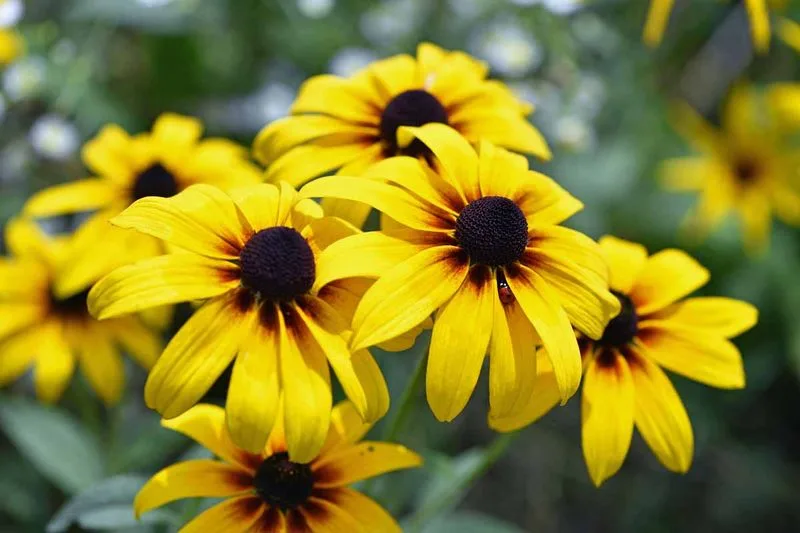
Black-Eyed Susans are a quintessential summer flower, known for their sunny yellow petals and contrasting dark centers. These hardy perennials thrive in full sun and well-drained soil. They are drought-resistant and attract butterflies, adding life to the garden. Often used in wildflower gardens, they provide a natural, carefree aesthetic. Deadheading helps extend the blooming period. Black-Eyed Susans are not only visually appealing but also promote biodiversity, supporting various pollinators throughout the season.
Sedum
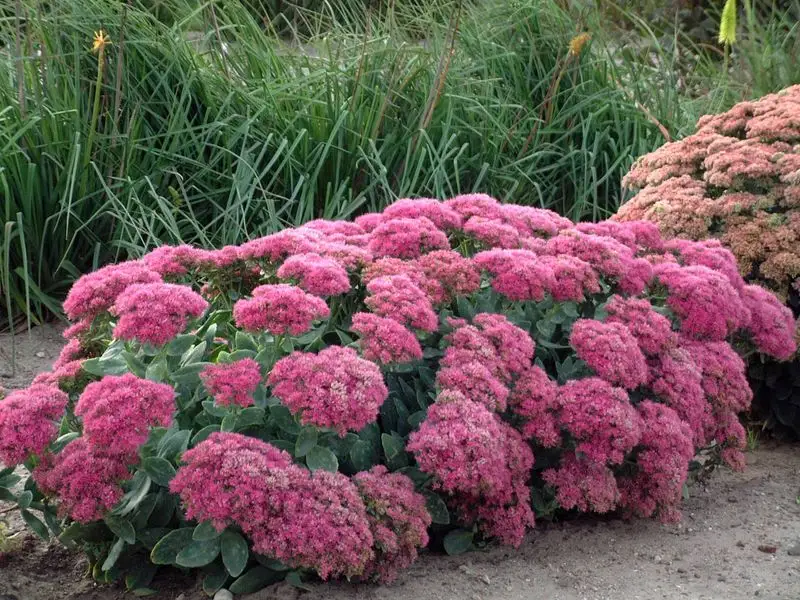
Sedum, or stonecrop, is a succulent that thrives in sunny, dry conditions, making it perfect for rock gardens. Its star-shaped flowers bloom from late summer into fall, providing a transition into autumn colors. Low-maintenance and drought-resistant, sedum attracts pollinators like bees and butterflies. It’s suitable for container gardening or as ground cover. Prune in early spring to remove dead growth and encourage new shoots. Sedum’s ability to thrive in less hospitable conditions makes it a valuable addition to any garden.
Asters
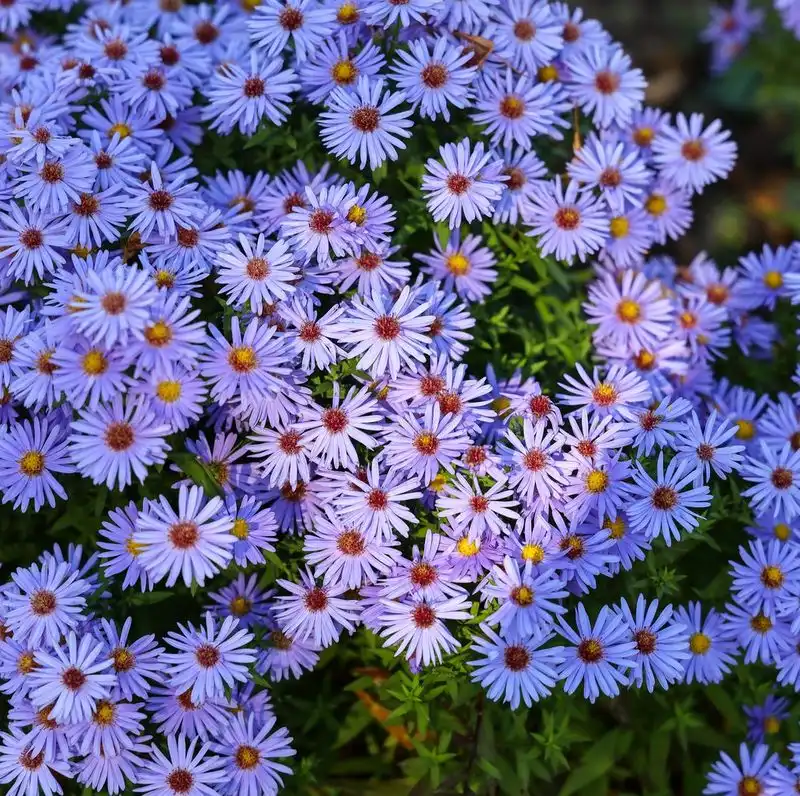
Asters offer vibrant color in the fall garden, with their daisy-like flowers available in purple, pink, and white. These perennials thrive in sunny spots and well-drained soil. They bloom from late summer to early fall, providing essential nectar for late-season pollinators. Regular watering and deadheading promote continued flowering. Asters are versatile, suitable for borders or containers. Their ability to extend the blooming season makes them indispensable for year-round garden enthusiasts.
Japanese Anemone
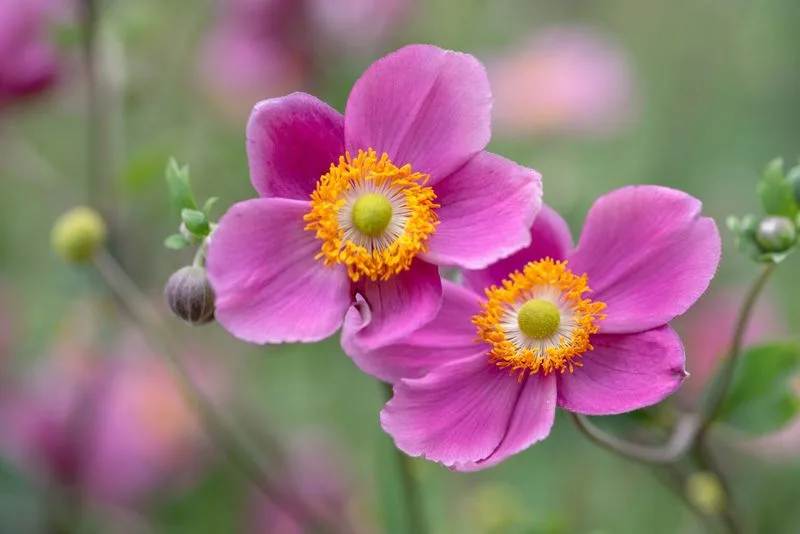
Japanese Anemones bring elegance to the fall garden with their delicate, cup-shaped blooms. They prefer shady, moist environments with rich soil. Blooming from late summer into fall, they add a touch of grace when many plants have faded. Their tall, slender stems make them suitable for the back of borders. Once established, Japanese Anemones require little maintenance, offering beauty with ease. They attract pollinators, supporting garden biodiversity as the seasons change.
Chrysanthemums
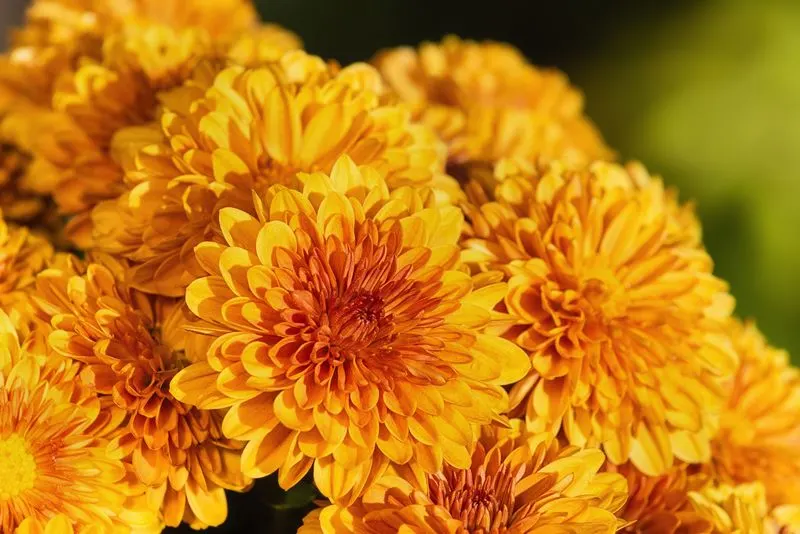
Chrysanthemums are iconic fall flowers, offering a wide array of colors and forms. These perennials thrive in sunny locations with well-draining soil. Blooming from late summer into fall, they provide a vibrant display as the season turns. Regular pruning and deadheading enhance their flowering period. Chrysanthemums are perfect for container gardening and add a burst of color to any landscape. They also serve as excellent cut flowers, bringing autumn beauty indoors.
Camellias
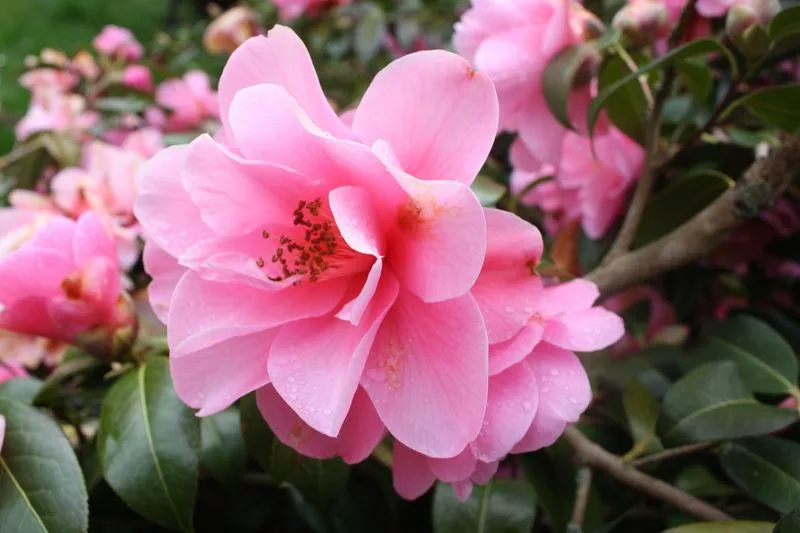
Camellias are winter-blooming shrubs known for their lush, rose-like flowers. They thrive in partially shaded areas with acidic, well-drained soil. Blooming from fall to spring, camellias add color and elegance when few other plants are in flower. Regular watering and mulching support their growth. Camellias are a classic choice for southern gardens, offering beauty and structure. Their evergreen foliage ensures a garden presence year-round, while their flowers provide a seasonal highlight.
Cyclamen

Cyclamen are charming winter bloomers, known for their delicate, butterfly-like flowers. They thrive in well-drained soil and cooler temperatures, making them perfect for winter gardens. These perennials prefer partial shade and need regular watering during active growth. Cyclamen’s intricate blooms add a touch of whimsy amidst more subdued winter landscapes. Ideal for containers or rock gardens, they offer visual interest when most flowers have gone dormant. Their unique appearance and resilience make them a beloved choice for winter gardeners.
Snowdrops
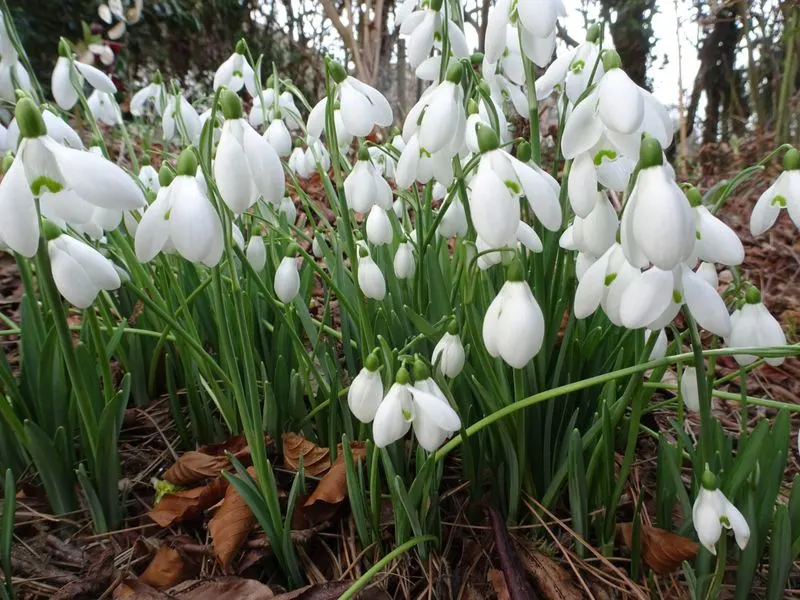
Snowdrops are among the first to bloom as winter wanes, their dainty white flowers pushing through the snow. These bulbs prefer well-drained soil and partial shade, thriving in woodland settings. Plant them in clumps for a naturalized look. Snowdrops signal the promise of spring, offering hope and beauty when few other flowers dare to bloom. Their resilience and charm make them a cherished addition to the winter garden. They are ideal for planting under deciduous trees, where they can spread and flourish.

